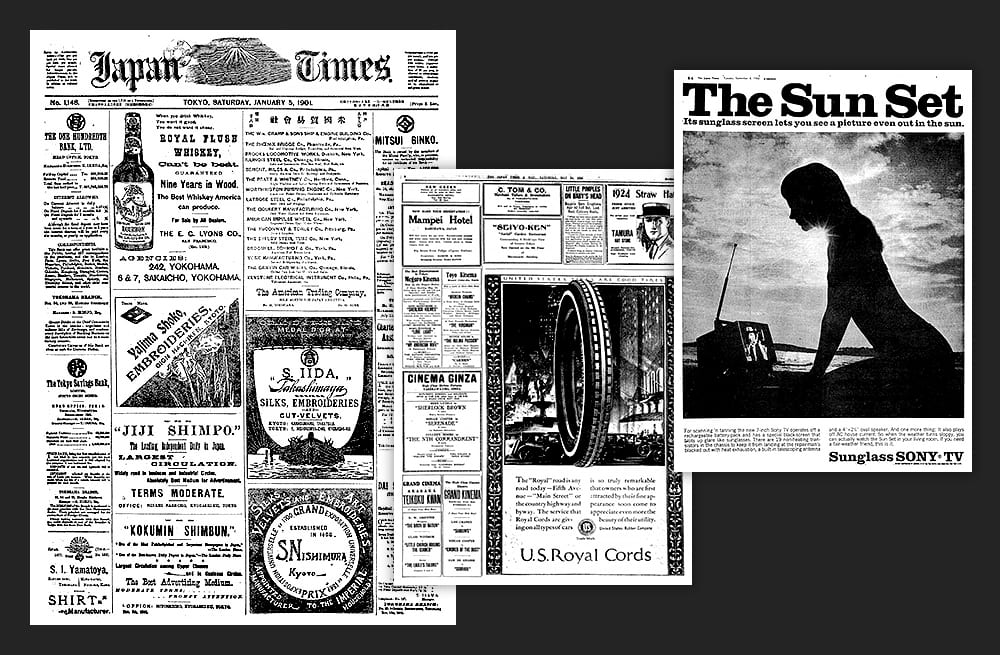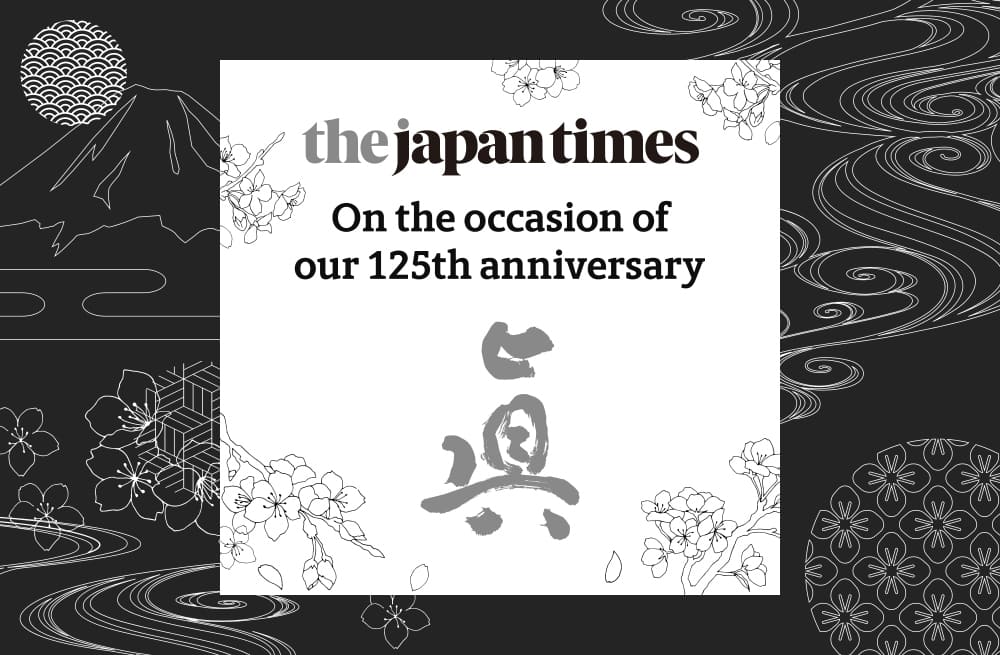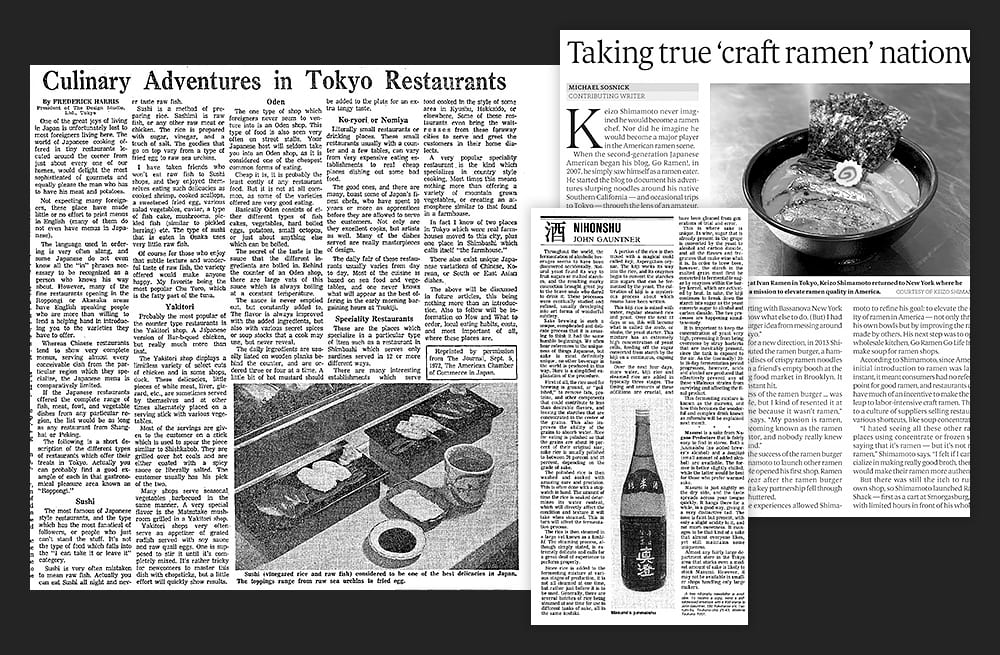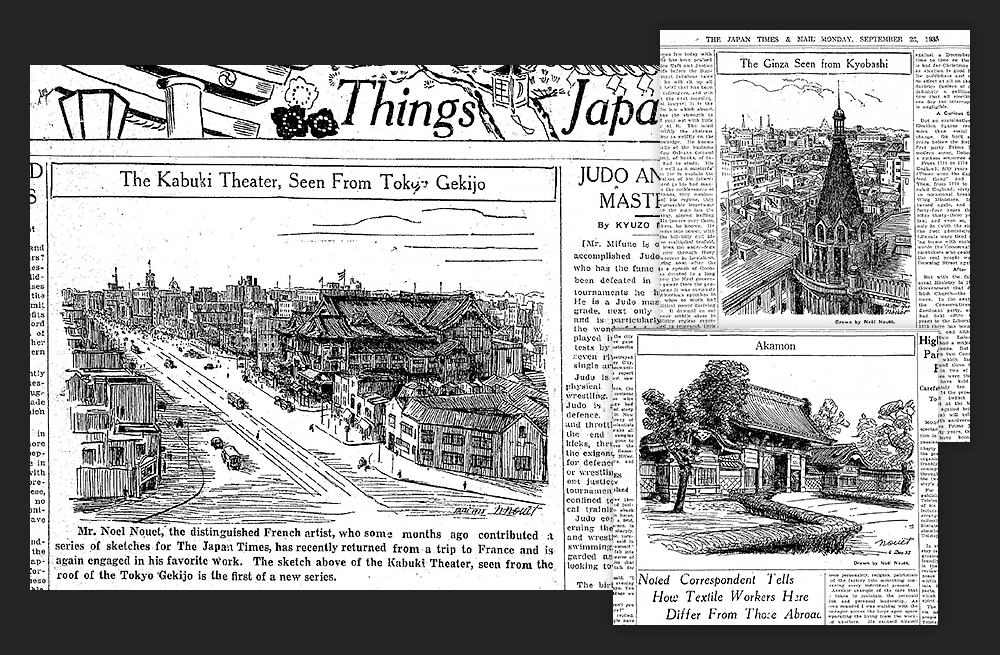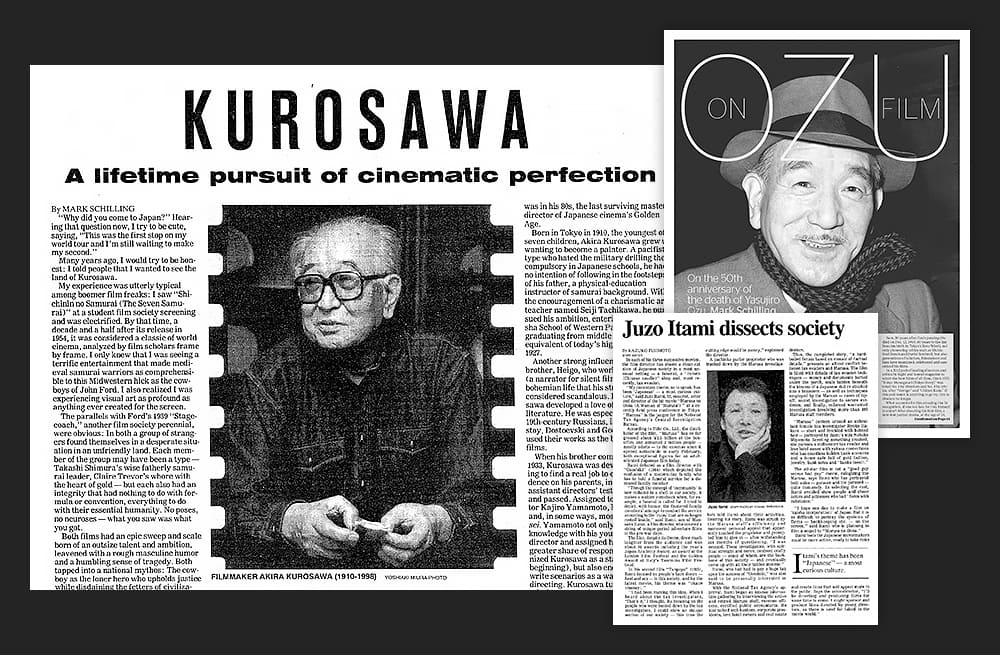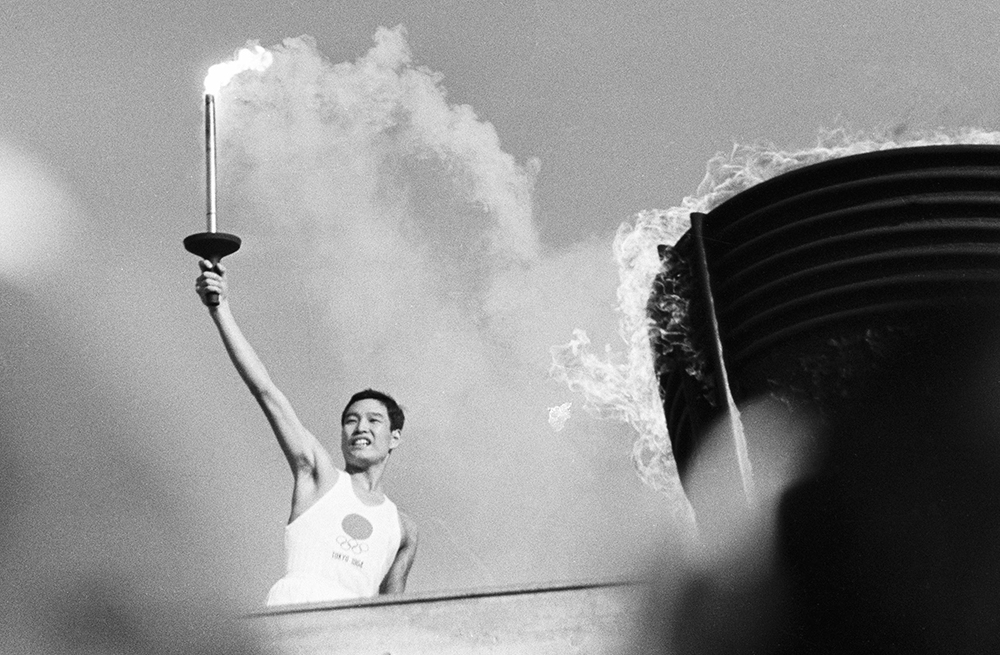August 06, 2021
Ads are a mirror reflecting Japan’s history and evolution
In the 1980s, the cultural context of ads was often discussed. It was a time when ads were frequently the starting point for fashion trends. The phrase “Ads are a mirror reflecting the current era” was in frequent use. But this only scratches the surface of the complex phenomenon of fashion. Ads also changed as Japan’s industrial structure and consumer behavior evolved. For example, ads for cars and home electronics, which ran frequently during the period of high economic growth, have decreased as those related to mobile phones and internet services have increased. These have become the ads we see daily. Japanese electronics makers, which used to produce a full range of home products, have shifted to specializing in products and services that best take advantage of their respective strengths. Automakers now focus more on overseas markets than the domestic market. The greater use of information and communications technology has driven a significant growth of that industry, and this is reflected in advertising.
Historically, The Japan Times played a news agency-like role, providing information in English to embassies and consulates in Japan. It is not difficult to imagine that expectations were placed on it to showcase the appeal of Japanese companies and products and help report on conditions in Japanese society. Japan opened its doors to the rest of the world following the Meiji Restoration. In an effort to boost Japan’s position in the global community, the government worked to help industry and the military under the slogan “fukoku kyōhei” (enrich the nation, strengthen the military). Standards of living improved. After the nation experienced defeat in World War II, there was a phase of recovery from the devastation, followed by a period of high economic growth. Japan eventually achieved the world’s second-largest gross domestic product. Ads carried in The Japan Times reflect all this history, and are witness to it.
Meiji 1897-1912
First silk and pearls, then beer and soap
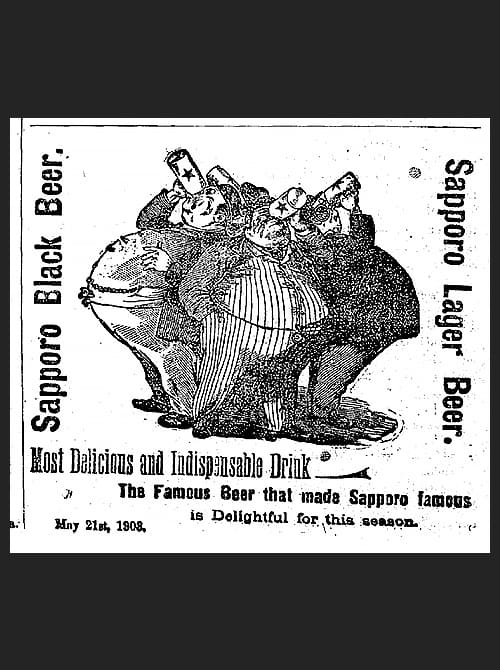
Click to read
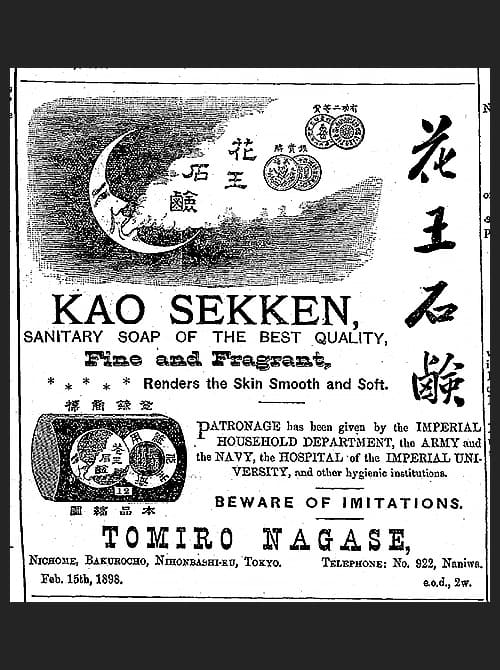
Click to read
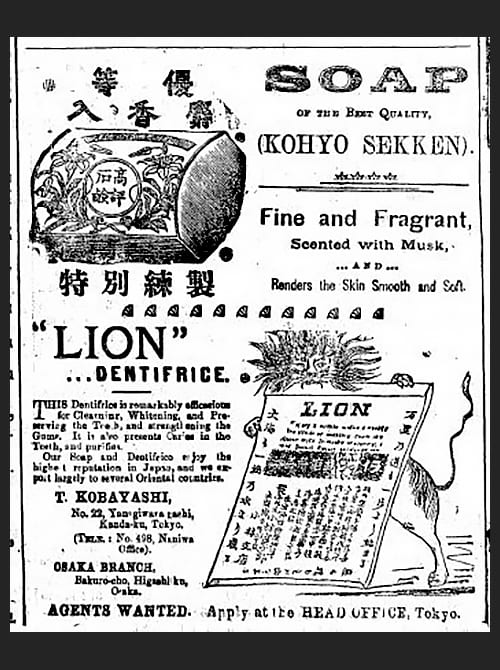
Click to read
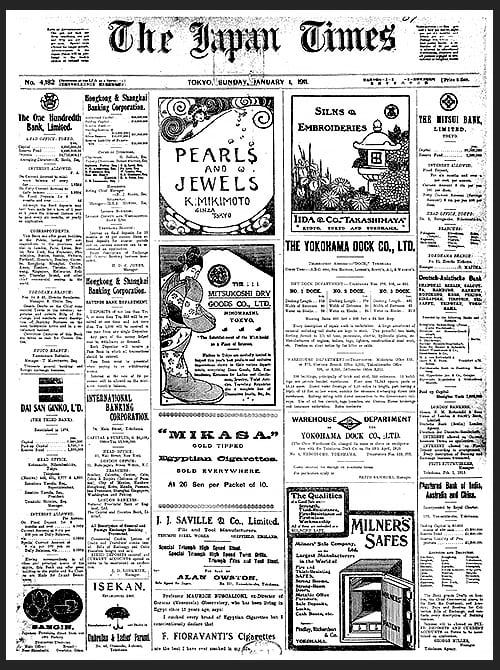
Click to read
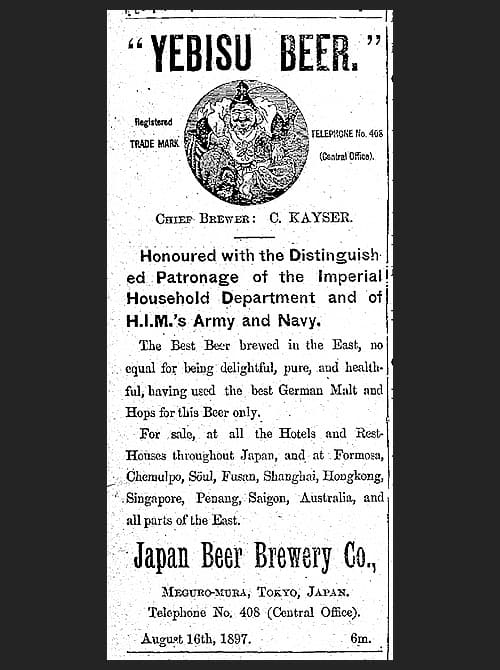
Click to read
The Japan Times was launched in 1897 during the Meiji Era (1868-1912). Not unsurprisingly, it carried ads for silk and pearl products, and others from emerging industries began to be seen. Beer, said to have been a favorite beverage of the politician Enomoto Takeaki, had begun to be imported in the final part of the feudal era, but domestic production grew to exceed imports by 1887. By that time, companies with modern brewing technology, including Nippon Beer, Sapporo Beer Brewery and Osaka Beer, had been established. One can see from ads in this period that Japanese were increasingly taking up the habit of drinking beer, and domestic production began in earnest. Domestic efforts to develop soap of a quality rivaling imported products started around 1890, when entrepreneurs Nagase Tomiro and Kobayashi Tomijiro launched domestic production. Soap was still a luxury item, but its use began to grow among ordinary citizens by the end of the Meiji Era, contributing greatly to public health.
A prominent characteristic of the ads in this era is the emergence of those placed by individual business owners. Beer and soap makers, the early adopters of newspaper ads, have been developing their advertising methods ever since, and today engage in wide-ranging advertising activities.
Taisho 1913-1926
Modern toothpaste, little luxuries and cars
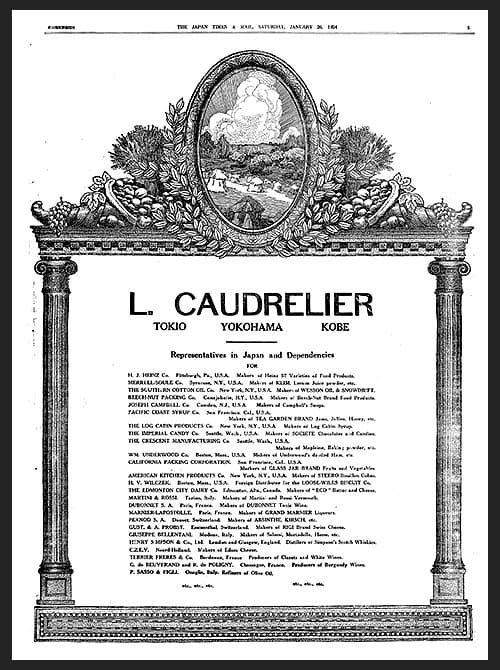
Click to read
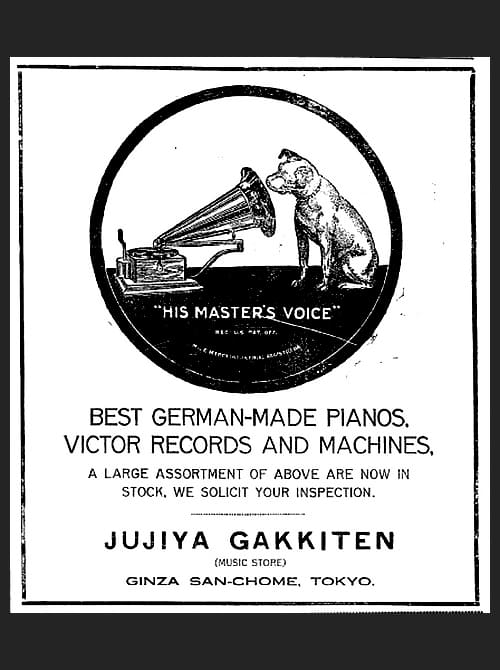
Click to read
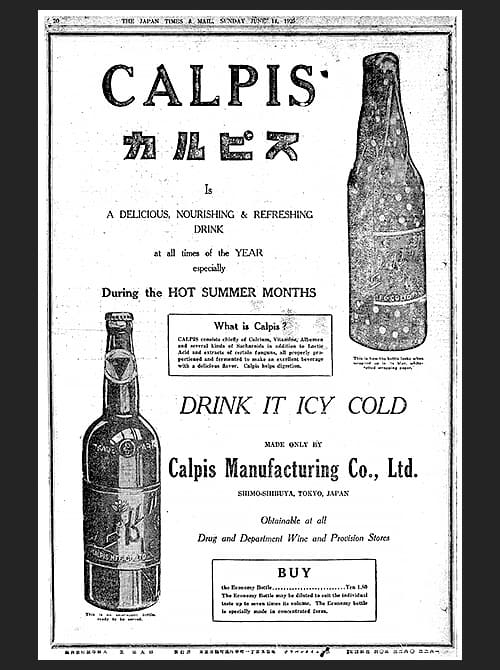
Click to read
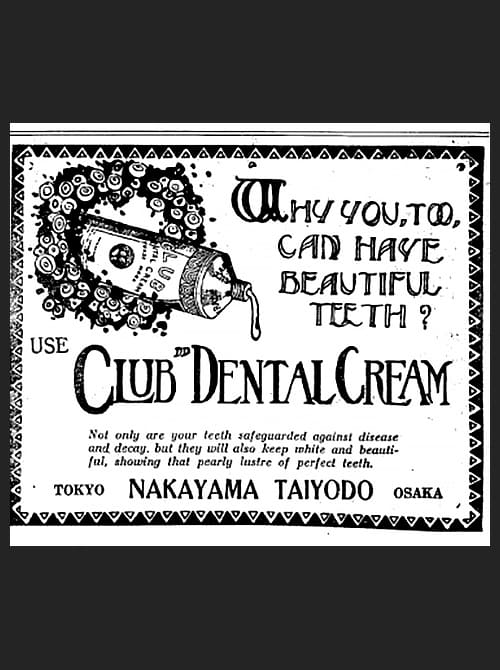
Click to read
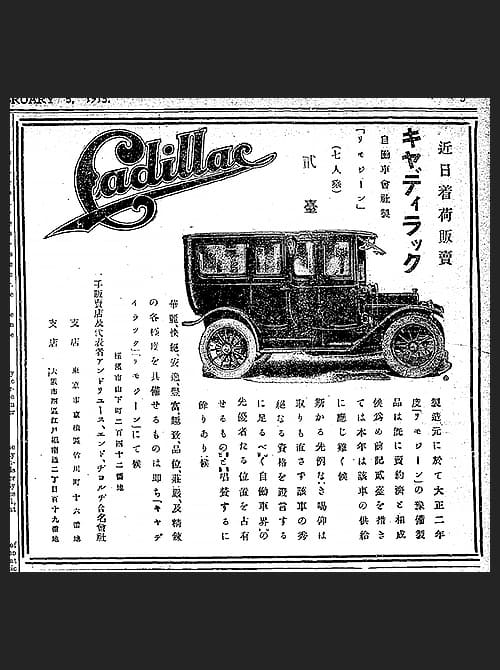
Click to read
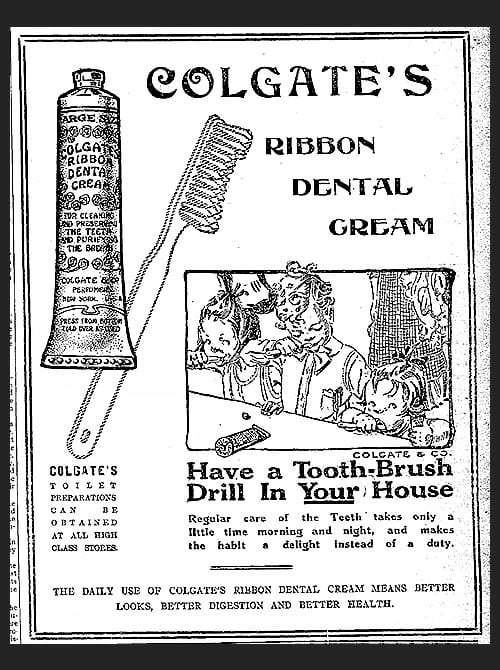
Click to read
Sandwiched between the Meiji and Showa eras, each of which saw major social changes, the Taisho Era (1913‐1926) may at first appear to lack special character. As the commotion of Meiji subsided, society turned inward — yet the germs of wide-ranging changes began to emerge. Ads for department stores and specialty shops reflected how people’s lives had improved, able to spend on little luxuries rather than just scraping by. Ads also reflected how the wealthy and educated — the main segment of The Japan Times’ readership at the time — were increasingly taking up a modern lifestyle. Automobile ads began to appear. Toothpaste in tubes began to be sold toward the end of Meiji, along with soap, and won increasing popularity. The emergence of toothpaste ads was an important milestone in the history of advertisement in Japan because they led businesses to realize the importance of catchy copy and attractive artwork. Ads from those days still impress even modern eyes. The predecessor to Calpis Co., maker of the popular soft drink Calpis, was founded in the Taisho Era as a health product. The company was quick to recognize the importance of advertisement. Today Calpis is drunk around the world, and its original slogan, “the taste of first love,” still pops up in conversation in Japan.
Showa I 1926-1945
Prewar: Automobiles and cultured pearls
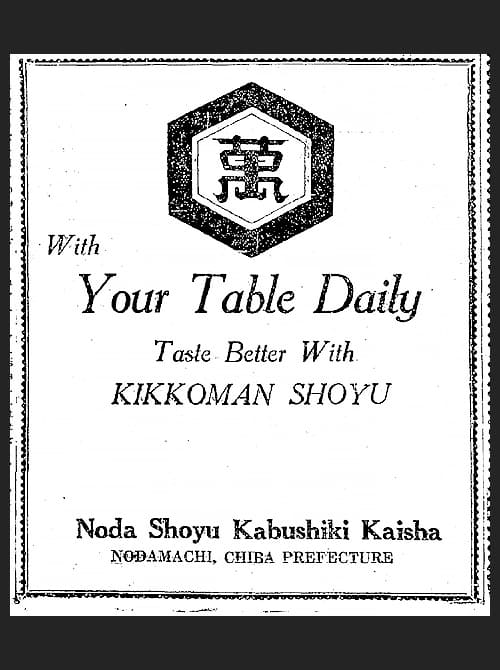
Click to read
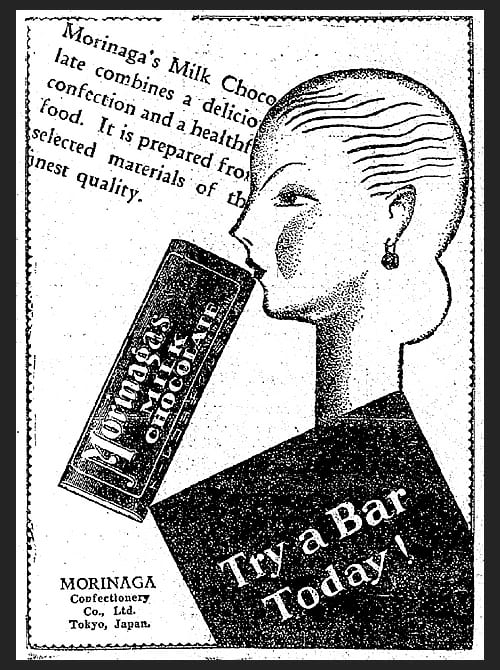
Click to read
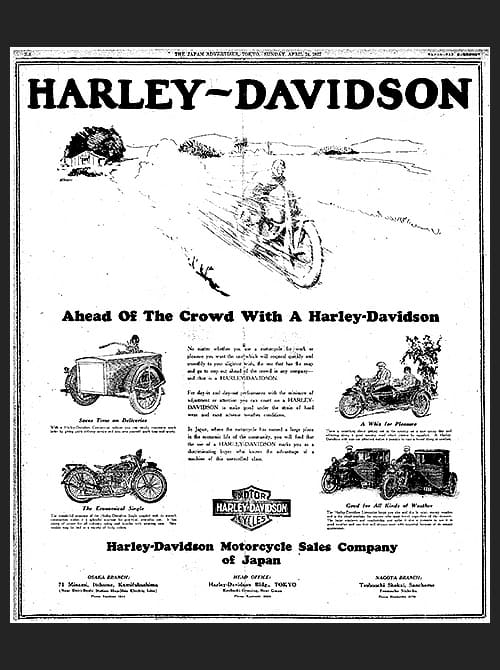
Click to read
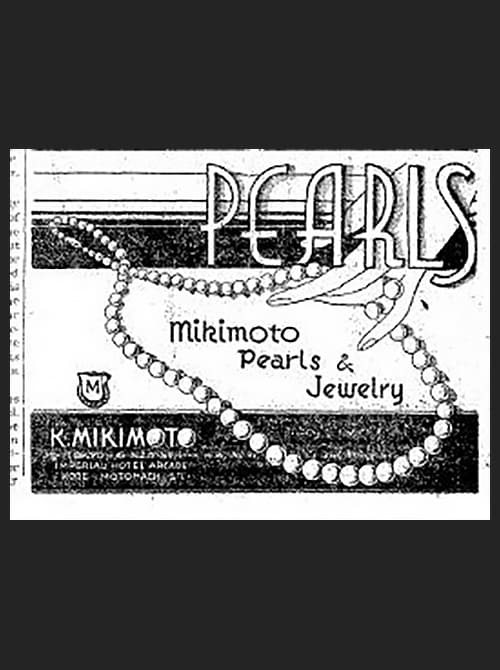
Click to read

Click to read
The prewar part of the Showa Era, starting in 1926, saw Japan become a global power rivaling the United States and major countries in Europe. Ads for automobiles and motorbikes increased, though most were still for foreign products. Only a handful of people could afford them initially, but ownership grew along with the number of the wealthy. The first symphony orchestra was established, and Japan proved to the world that its culture was no less sophisticated than those of its Western counterparts. Japanese pearls made a major leap in quality thanks to domestically developed culturing technology and came to be recognized as the world’s best. They had a devastating impact on the market for natural pearls. Japanese cultured pearls, which received an additional boost when Coco Chanel adopted the pearl necklace as a key fashion item, would come to dominate the global market.
Showa II 1946-1970
Postwar: Japan’s cars and radios go global
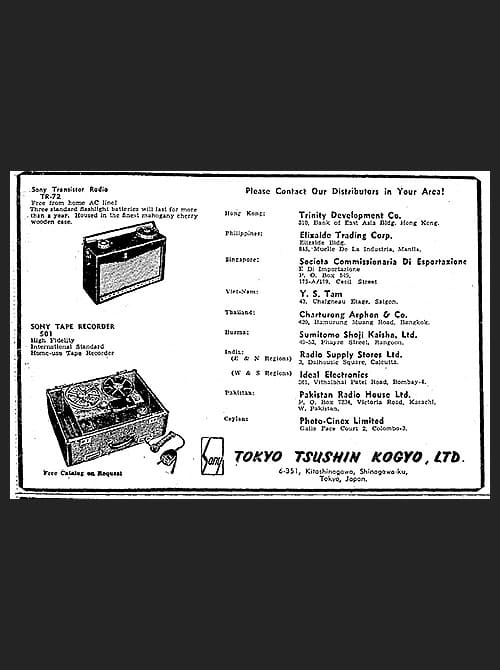
Click to read
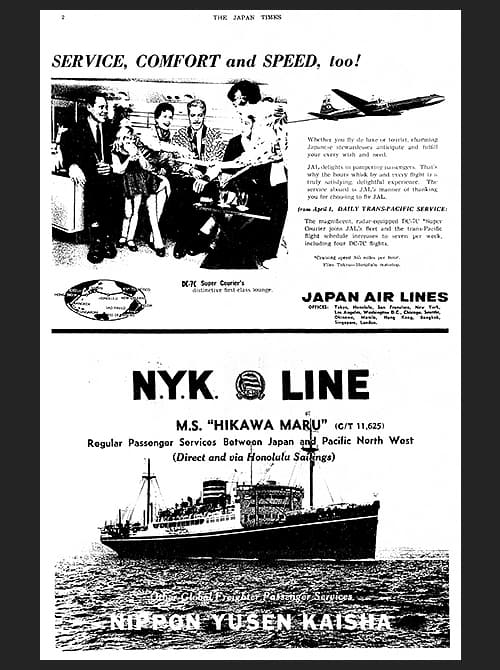
Click to read
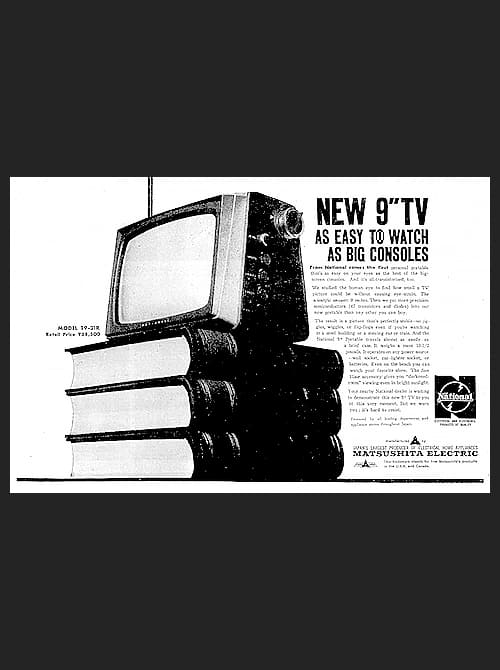
Click to read
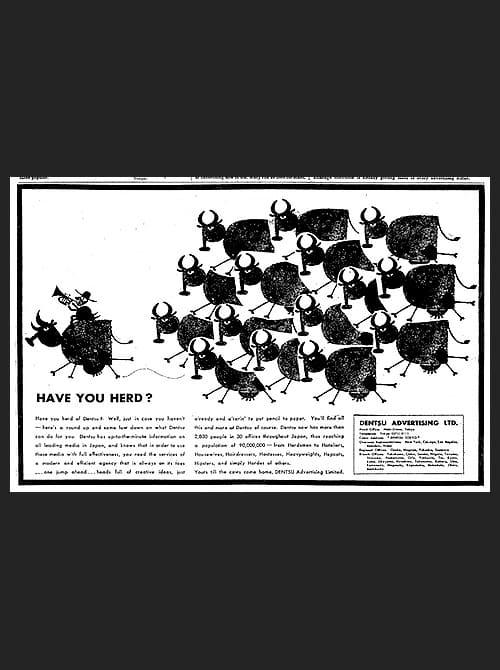
Click to read
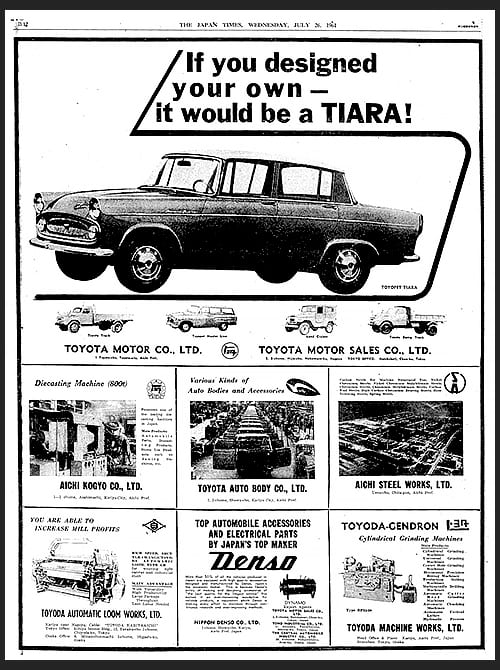
Click to read
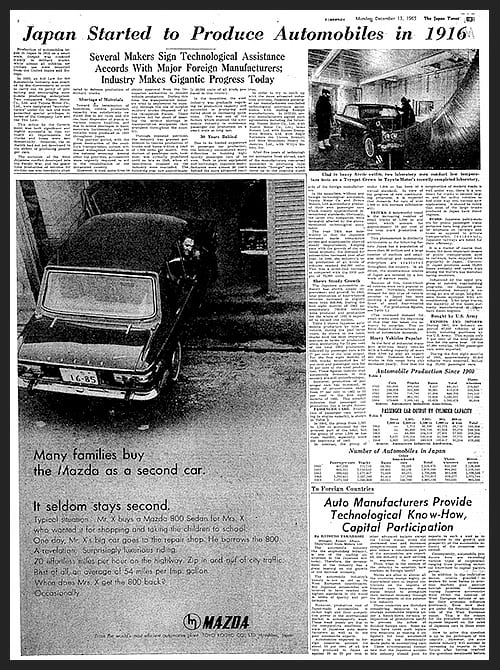
Click to read
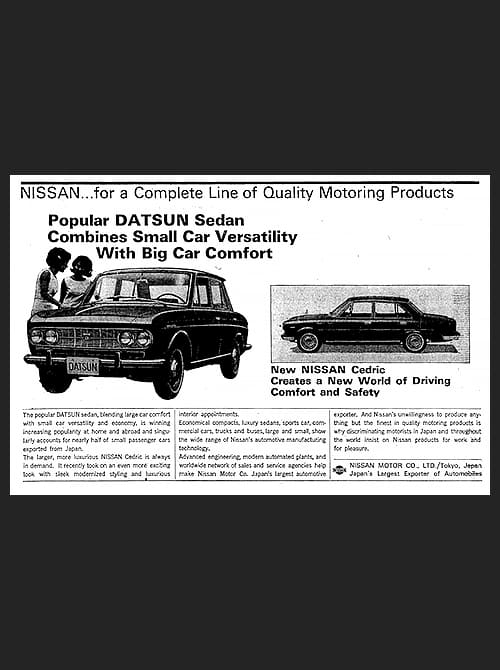
Click to read
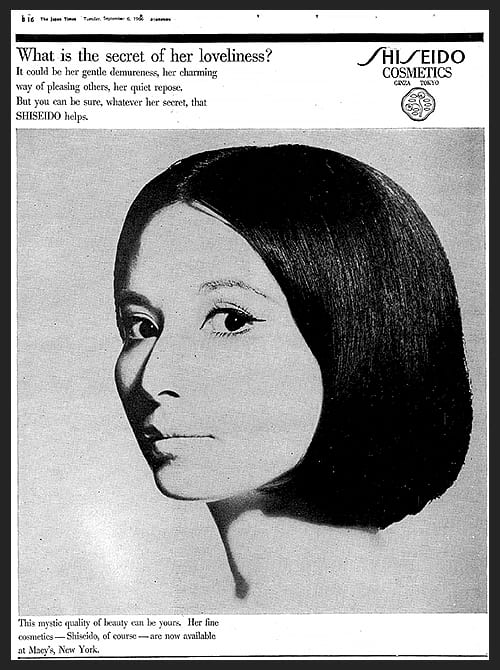
Click to read
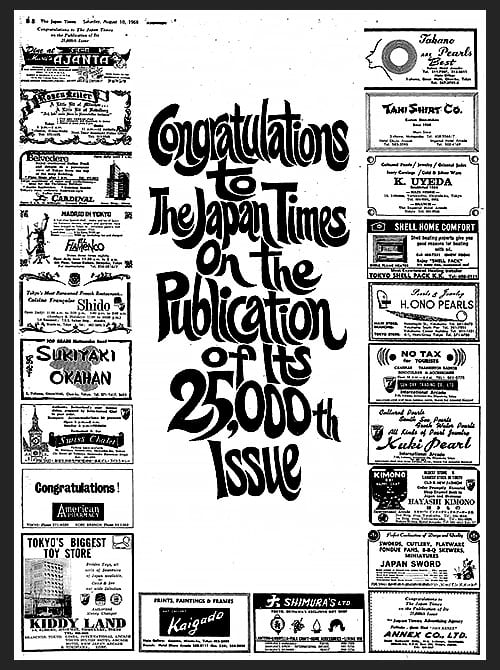
Click to read
In the postwar Showa Era, from 1946 to about 1970, Japan rebuilt from the ravages of war and achieved miraculous economic growth, flooding global markets with its products. Applying technology originally developed for military equipment, Japan’s automakers grew significantly, eventually taking large shares in the global market. Advertising, once dominated by foreign vehicles, now prominently featured domestic models. Though the transistor radio was invented abroad, household electronic products from Tokyo Tsushin Kogyo K.K., which would become today’s Sony Group Corp., won worldwide recognition for their high quality. Its ads featured technology that was the pride of the nation and demonstrated a high degree of advertising skill. Cosmetics began to be marketed to women in the rest of the world. Japanese companies’ strategy of establishing a brand image through many high-quality ads was imitated by foreign rivals. Ad concepts developed in this period are still in use today.

Toshiyuki Kitahara
Senior consulting director,
Dentsu Media Lab
Toshiyuki Kitahara graduated from the Tokyo Institute of Technology with a bachelor’s degree in electrical and electronic engineering, and received a master’s degree in physical information engineering from the same university. He joined Dentsu Inc. in 1985, working in the Information Systems Division and the Corporate Planning Division before joining the Research and Development Division.
He has been engaged in research on mass media and communications, consulting for media companies and on organizational and human resource systems, and research on advertising and related market and industry trends.
He is the co-author of “Information Innovators: Leaders of a Co-Creative Society” (1999, Kodansha) and many other publications. He has been a part-time lecturer to graduate students at the Tokyo Institute of Technology, a concurrent lecturer to graduate students at Hosei University and Rikkyo University, an expert member of study groups at the Ministry of Internal Affairs and Communications and at the Ministry of Economy, Trade and Industry, and an expert member of the Intellectual Property Research Institute.
「広告は時代を映す鏡である。」
1980年代は広告が文化的な文脈で語られ、広告から流行が起きていたような時代でもあったが、このころにはよく使われた言葉でもある。しかしこの言葉は流行といったような表面的な事象だけを表しているのではなく、日本の産業構造の変遷や消費者の消費行動の変化と密接に関係して広告は変化していることも語っている。例えば高度成長期から多く出稿されていた自動車や家電製品の広告は今では影を潜め、かわりに携帯電話やインターネット関連の広告を日常的に見ることの方が増えている。電機産業ではどこも家電製品をフルラインナップで出していたような時代から、それぞれの強みを生かした製品・サービス群への特化という変遷があり、自動車産業においては国内市場よりも海外市場での成長が重視されている。社会のICT化の進展により、情報通信産業の発展は著しい。その結果が広告に反映されているのだ。
The Japan Timesは歴史的に大使館や領事館への情報発信を通して、通信社的な位置づけがあったわけだが、それだけに海外に対して日本の産業や商品のアピールや日本の社会状況への理解の促進が期待されていたはずである。日本は明治維新で世界に門戸が開かれ、西洋列強に飲み込まれないように富国強兵が唱えられ、工業化を進めることにより国力を高め、それとともに生活水準が向上し、第二次世界大戦での敗戦による復興から高度成長期を迎え、世界第二位のGDPになったという歴史がある。この間のThe Japan Timesにおける広告の変遷は、その歴史の一端を忠実に物語っており、これらの広告は歴史の証人でもある。
明治 1897-1912
The Japan Timesの創刊は明治30年。明治期の外貨を稼ぐための重要な輸出品であるシルクや真珠といった商品の広告は予想通りではあるが、あらたに国内で勃興した産業の広告が出始めた頃でもある。榎本武揚が愛飲したと伝わるビールはすでに幕末には輸入されていたが、明治になって国内生産が始まり、明治20年には国内生産が輸入を上回るほどの規模になった。このころまでには、今に続く近代的醸造方式を取り入れた日本麦酒株式会社、札幌麦酒株式会社、大阪麦酒株式会社などの企業が設立され本格的な国内生産が始まり広く普及してゆくようになった。日本人もビールを飲む習慣がついてきたことが広告からもうかがえる。石鹸は明治20年代に長瀬富郎、小林富次郎らが国内製造に乗り出して、海外からの輸入品に比する商品の開発が始まった。当時はまだまだ高級品だったが、明治の終わりには庶民に向けても次第に普及が広がりはじめ、公衆衛生の向上に大きく寄与することになる。
新聞の特性として、個人商店の広告もすでに見られるのもこの時期の特徴でもあり、また、先のビール、石鹸と言ったいち早く広告を始めた企業は広告の重要性を認め、今に至るまで広告手法を進化させさまざまな広告活動を行っていることも指摘したい。
大正 1913-1926
大正という時代は、社会が大きく動いた明治、昭和に挟まれて大きな特徴はないように思えるが、明治の喧噪が落ち着き、社会自体が内面に向かい、激動の昭和に向けて国内でさまざまな変化の萌芽が現れた時代であると考えられる。明治期に現れた産業に加えて、生活面の充実に向かう広告が盛んになされるようになった。デパートや数々の専門店の広告が象徴しているように、人々の生活が向上し余裕が出てきていることがうかがえる。特にThe Japan Timesの読者は富裕層・知識階級層でもあり、いわゆるモダンな生活が彼らに普及し始めていることの証でもある。自動車の広告が最初に出たのもこの頃である。歯磨き粉も石鹸と相前後して現れた商品である。明治の終わりにチューブ式の歯磨き粉が登場し普及していった。また歯磨き粉の広告は広告の歴史的にも重要であり、国内の広告ではあるが広告コピー、アートワークの重要性が認められた広告商品でもあり、それらの広告は未だに目を見張る広告でもある。カルピスはまさに大正期に創業され、いまでは世界的に普及しているが最初は健康増進の目的でもあった。国内広告で使われた「初恋の味」というコピーは今でも語り継がれているが、やはり広告というものの重要性をいち早く認めた企業でもあった。
昭和Ⅰ 1926-1945
戦前の昭和は、欧州・米国などの大国と肩を並べる発展へと向かった時期である。国力は向上し、例えば自動車やバイクの広告、当時はまだ外国車が主流だが、それらが増加した時代でもある。もちろんまだほんの一部の人々向けではあるが、富裕層が増加し個人が自動車やバイクを所有することが普及し始めた時代でもある。文化的にも例えば交響楽団が設立され、海外に比肩する文化が日本にあることを知らしめている。日本で発明された新たな真珠の養殖技術により日本の真珠は品質が飛躍的に向上し、世界最高峰として認識されるようになり、天然真珠の市場に壊滅的な打撃を与えた。さらにココ・シャネルが真珠のネックレスをファッションの重要なアイテムとして取り入れたこともあり、日本の養殖真珠が世界の市場を席巻することになった。
昭和Ⅱ 1946-1970
戦後は、国土が焦土と化した壊滅的な中からの日本の復興が始まり奇跡的な高度成長をとげ、世界中に日本の商品が溢れた時代である。それまでの軍需産業の技術などの積み重ねを活かし、国内の自動車産業は大きく発展し世界市場で大きなシェアをとるまでに拡大した。戦前の広告は外国車がメインだったが、戦後になって国産自動車に入れ替わったことがその証である。また、トランジスタラジオ自体は日本の発明ではないが、東京通信工業が開発した製品はその高品質さが世界的に評価され、今に至るブランド価値を構築している。広告からも日本の誇る技術を訴求しており、小型テレビの広告は広告作品としての完成度も高い。女性用化粧品も世界に向けて展開していく時代でもある。数々の優れた広告作品で訴求力を高め、ブランドイメージを醸成していく手法は海外への広告でも踏襲され今に至る一貫した広告コンセプトがここでも認められる。

